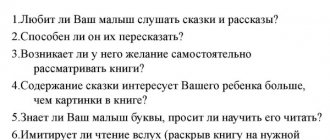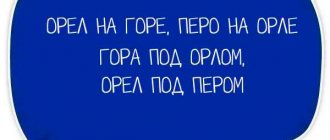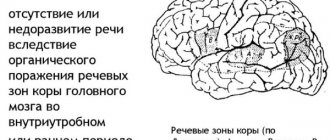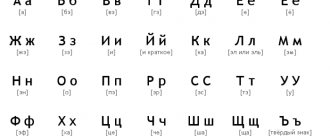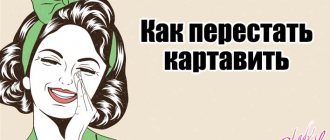March 20, 2019
Averyanova Sveta
The set for teaching reading by N. A. Zaitsev is impressive. Not everyone can allocate such an amount from the family budget. If you can’t wait to test the technique, but don’t have extra funds, make Zaitsev’s cubes from scrap materials with your own hands.
What is included in Zaitsev's reading kit
The learning kit includes 12 types of dice and wall-mounted storage charts. To read syllables outside the home, you can additionally print small A4 cards.
The bulk of the time spent making the activity kit will be spent on the cubes. Remember that they differ in weight, size, color and filling.
In total you need to make 52 pieces:
- Big gold ones . These are the vowels A-O-U-Y-E. The letters are written in red, the base is yellow.
- Small gold ones . These are the vowels E-Y-Y-Y-I. The warehouses are brown, the base is yellow.
- Large yellow-orange (iron-gold) .
Warehouses with two letters: consonants B, V, M, G, D, Z, L, N, R + vowels A, O, U, E, Y. For example, MA, BA, VA, GA, YES and so on. Write the letters in blue. Make warehouses with consonants B, V, M + vowels in duplicate. Additionally, make a cube for each consonant without a vowel pair: B, V, M, G, Z, L, N, R. - Small yellow-orange (iron-gold) . This is a combination of the consonants B, V, M, G, D, Z, N, R, L with the soft sign b and the vowels E-Y-Y-Y-I. For example, B-BE-BY-BY-BY-BY and so on. Warehouses with a soft sign are written in blue-green, the rest - in blue-blue.
- Double large iron-gold . Warehouses Ж, Ж+ь, А, О, Ё, Е, И, У. Write the letters in blue.
- Small iron (steel shade) . This is the letter Y. Write it in blue. This is the heaviest cube.
- Large wooden and gold ones . Two pieces each: P, K+O-A-E-Y-U, two copies of K, P without vowels. One each: the warehouses F, T, S, X + vowels O-A-E-Y-U, and one copy of the consonants F, T, S, X without vowels. For P, K, F, T, S, X you need blue, for others - blue-blue.
- Large double wooden and gold . These are the warehouses Ш, Ц + ь, А, О, У, Ё, Е, И. To combine a consonant and a vowel, use blue-blue font color, for Шь - blue-green. Don't forget to make separate cubes for Ш and Ц without a vowel, color blue.
- Small wooden-gold ones . Two copies each of the warehouses P, K, F, T + b, I, E, Yu, I, E. One each of C, X+b, I, Yu, I, E, E. Warehouses b + consonant write in blue-green in font, the rest in blue-blue.
- Double small wooden and gold . These are the consonants Ch, Shch separately and in pairs with the letters b, o, a, e, e, u, i. Chch, Shch write in blue-green font, Ch, Shch - in blue, the rest - in blue-blue.
- Large wooden and iron . These are warehouses with b + consonants V, B, D, Z, S, T. The font color is blue-green.
- Small white . Punctuation marks: comma, period, question mark, exclamation mark, hyphen, accent.
Important! Nikolai Aleksandrovich Zaitsev uses names to denote sound: iron are voiced consonants, wooden are voiceless, golden are vowels. When choosing a filler for cubes, be guided by this author’s classification.
Slide captions:
Speech therapy game Developed by: teacher-speech therapist MKDOU No. 37 “Swallow” Timofeeva E.V. Novocheboksarsk 2012 My speech therapy cubes
THE GOAL is to automate the sounds in words and phrases, to coordinate numerals with nouns, to develop and improve the sound analysis of words, to develop articulatory motor skills, hand motor skills, and phonemic hearing.
Game for children from 4 years old. The game requires the help of an adult who becomes the leader.
Game options
Goal: development of phonemic awareness. The child throws a yellow cube with numbers and strikes with a stick (claps his hands, rings a bell) on the table, according to the dropped number. Another child playing guesses how many beats were sounded. Game "Knock".
Goal: agreement of numerals with nouns, development of vocabulary. In front of the child is a stack of object pictures (selected taking into account the automated sound) and a yellow cube with numbers. The child takes the picture and throws the cube, then counts with the given word until the number that appears on the top edge of the cube. "Count it"
Goal: to automate the sounds in words and phrases. In front of the child is a stack of object pictures (selected taking into account the automated sound) and an orange (yellow, purple) cube. The child throws it and looks at the dropped sound. The teacher gives him a stack of pictures corresponding to this sound. Then the child throws a yellow cube with numbers and counts the pictures according to the number that appears on the yellow cube with numbers. Then he names them. “Make sure you don’t make a mistake!”
Goal: finding the location of the sound in three positions (beginning, middle and end of the word). In front of the child is a stack of object pictures (selected taking into account the automated sound) and an orange cube. The child throws it and looks at the dropped sound. The teacher gives him a stack of pictures corresponding to this sound. Then the child throws a yellow cube with numbers and counts the pictures according to the number that appears on the yellow cube with numbers. Names them, then determines the place of a given sound in a word (at the beginning, middle, end of the word) and places the pictures on the diagram. Pictures related to one scheme are placed one on top of the other. "Psychic"
Goal: To train in determining the number of syllables in a word. In front of the child is a stack of object pictures (selected taking into account automated sounds) and an orange cube. The child throws it and looks at the dropped sound. The teacher gives him a stack of pictures corresponding to this sound. Then the child throws a yellow cube with numbers and counts the pictures according to the number that appears on the yellow cube with numbers. Names them, then says how many syllables are in the word. “Throw and throw, name how many syllables”
Goal: to train children in differentiating sounds (oppositional sounds), to develop phonemic hearing. In front of the child is a stack of object pictures (selected taking into account the automated sounds) and all the cubes with sounds. The child rolls all the dice one by one. An adult takes stacks of pictures corresponding to the dropped sounds and confuses them. The child needs to arrange the pictures into three piles, corresponding to the sounds. "Russell Pictures"
Recommendations If your child pronounces a sound in a word incorrectly, ask him to repeat this sound several times correctly. When you finish the game, praise your child, even if not everything works out yet. An adult’s speech should be a role model, unhurried, emotional, with clear articulation, precise intonation. Do not overload children with a large amount of proposed material. As soon as you feel they are tired, end the lesson.
Sources Inshakova O.B. Album for speech therapist Vlados, 2011 Kozyreva L.M. Games in pictures with sounds R, Rb, L.L Academy of Development, 2004 Kozyreva L.M. Games in pictures with sounds S, Sh Academy of Development, 2004
Thank you for your attention!
Step-by-step manufacturing instructions
You can make Zaitsev's cubes with your own hands in one or two days. First, prepare the materials for the base, then download and print the warehouse layout. Be sure to use a color printer; the background tone and font for the letters are of great importance when teaching syllable reading. After the preparatory stage, start creating.
From cardboard
The most popular and cheapest option for homemade cubes. To make it, you will need hard white cardboard, layout into syllables, glue, and scissors.
- Print the warehouse layouts on regular office paper.
- Attach each one to a sheet of cardboard and glue it with PVA.
- Leave the workpiece under the press and let it dry.
- Fold the unassembled element along the edges.
- Glue the cube together so that one side remains open.
- Fill with your chosen material.
- Close the last edge and glue to the end.
- Dry the collected cubes in a warm place. Pull them together with a banknote rubber band to help the cardboard hold its shape better.
- After a day, cover the corners and edges with tape, or with thermal film.
- Praise yourself for your efforts! You got the Zaitsev kit for free.
From cardboard boxes
Boxes of 0.2–0.5 ml of juice and kefir make the task easier for thrifty parents.
There is no need to glue the cubes. All that remains is to think about where to find so many ready-made forms. Once you have 52 boxes, you can start creating your homemade masterpiece.
You will need:
- glue;
- scissors;
- markers;
- fillers;
- scotch;
- large print stencils.
It makes no sense to print a sample of syllables for cubes from boxes; they probably won’t fit the size of the base.
Write the warehouses yourself using a letter stencil, paint the background or cover the edges with self-adhesive paper.
Important! Make large cubes from paper boxes with a capacity of 0.5 ml, double cubes, and small cubes from containers with a capacity of 0.2–0.3 ml.
From plywood
Zaitsev's cardboard cubes are suitable for children over 4 years old. Babies will quickly spoil them, trying to taste them, crushing them in their palms. So that dad's efforts don't go in vain, make cubes with plywood warehouses.
You will need:
- plywood 0.6 cm thick;
- screws;
- fillers;
- paper;
- scotch.
Start your creativity by preparing the wooden parts for the cubes. Cut a sheet of plywood according to the dimensional template:
- 88 pieces – 54x48 mm
- 50 pieces – 60x60 mm
- 80 pieces – 44x38 mm
- 44 pieces – 50x50 mm
- 12 pieces – 54x108 mm
- 8 pieces – 44x88 mm.
First, take 44x38 rectangles - 4 pieces, connect them with screws. Two edges will remain open.
Cover one with a 50x50 square, leaving the second to fill the cavity. So collect 47 cubes.
Fill them according to the list with ringing and rustling material.
Cover the remaining edge with another 50x50 square.
Screw all sides together.
Now you need to print a diagram of the warehouses on office paper, stick the samples on the edges with a regular glue stick or PVA. A standard scan downloaded from the Internet will fit the size of the cubes.
Cover the finished products with tape.
From plastic cubes
This is the most expensive option for self-production of educational material using the Zaitsev method. Buy a set for children's construction from plastic cubes of different sizes, prepare a sharp knife for opening one face, a soldering iron, tape and samples of warehouses.
- Cut one side of the cube with a knife. It is not necessary to open it from four sides; it is enough to make a small gap so that the filler can pass inside.
- Fill the cavity with “phonetic” material.
- Solder the edge.
- Write warehouses on paper using a felt-tip pen according to the model.
- Stick to the cube using double tape.
- Cover the top with a protective layer of transparent tape.
On a note! In stores you can find plastic cubes with opening edges like in the photo. This version of the base is much more convenient; it does not require opening and sealing.
methodological manual “Speech - cubes”
| Author: Pisarevskaya Polina Sergevna, Teacher speech therapist MBDOU "Child Development Center - kindergarten No. 15 “Wonderland” Khanty-Mansiysk |
Introduction
Educational and methodological manual “Speech - cubes” for the correction of lexical and grammatical categories and connected speech in children of senior preschool age. The use of game techniques when correcting speech with the help of a manual allows you to develop phrasal speech, master the construction of complex sentences, enrich (expressive speech) vocabulary, master the skills of word formation and inflection with the help of exercises and tasks
The content of correctional work in accordance with the federal state requirements of preschool education (hereinafter referred to as FGT) is aimed at creating a system of comprehensive assistance to children in mastering the basic educational program of preschool education, correcting deficiencies in the physical and (or) mental development of pupils, their social adaptation and providing qualified assistance children with disabilities. One of the priority tasks for senior preschool age is preparing children for school. One of the main indicators of a child’s readiness for successful learning is correct, well-developed speech. Good speech is the most important condition for the comprehensive development of children. The richer and more correct a child’s speech, the easier it is for him to express his thoughts, the wider his opportunities for understanding the surrounding reality, the more meaningful and fulfilling his relationships with peers and adults, the more active his mental development is. Therefore, it is so important to take care of the timely formation of children’s speech, its purity and correctness, preventing and correcting various violations, which are considered to be any deviations from the generally accepted norms of a given language.
Speech therapy, as a science, allows you to study speech disorders, prevent and overcome them in the process of raising and training a child in direct educational activities and in play. For children who have problems in lexico-grammatical forms and connected utterances, these are, as a rule, children in the group of general speech underdevelopment. The manual retains the importance and role of play activities in preschool age, and timely correction of speech, as a necessary condition for the comprehensive development of personality, communication culture and intelligence. Systematization of didactic games according to the manual makes it easier to overcome speech deficiencies and teaches you to speak correctly and competently.
The purpose of the teaching aid “Speech - Cubes” is the development of lexical and grammatical categories and connected speech in children of senior preschool age.
The objectives of the manual are revealed through games and exercises, both in fragments of direct educational activities, and in individual work as a surprise moment.
- Attracting interest, forming motivation for the child’s interaction in the logoprocess: Game “Mood”.
- Development of a skill through tactile sensation, word-sign and object associations: playing with a “Sensory” cube.
- Formation of the skill of agreeing a noun with relative adjectives, the game “Color the Picture”; possessive adjective and development of ideas about the world around us: Game “Lost”.
- Master the agreement of nouns with cardinal numerals in gender, number, and case. Game "Count it"
- Consolidating word formation skills, activating vocabulary, expanding ideas about the world around us. Game "Cook".
- Consolidation in the agreement of pronoun and noun, repetition of lexical topics. Game "Greedy".
- Consolidating vocabulary on a lexical topic. For example, the game "Seasons".
- Development of visual gnosis. Game "Find the picture"
- Learn to navigate on a plane; in space. Game "Catch a fly".
- Formation of skills in selecting antonyms: words - signs, words - actions. Game "On the contrary".
- Formation of the skill of composing a descriptive story using TRIZ technology in pedagogy. Game “Descriptive story”, “Make it up”
- Consolidating the use of prepositions in composing sentences and connected speech.[1]
Set of teaching aids:
Box……..………………………..…….…..1 pcs.,
Cubes…………………………………….……6 pcs.,
Card index of games ………… ………………………….. 8 pcs.,
Pictures for assignments…………………….. .…30 pcs.
From history to reality
Creating a manual as a necessity to involve the child in the process of speech correction, with the help of changing visual and demonstration material. From the flat – book, cards, pictures, etc. to a three-dimensional object - for example a cube. The wooden reading cubes I saw in the store gave me the idea of the possibility of using the cube as an option in correcting a child’s speech to help the author’s speech therapy aids. For example, to the logotechnologies of S. V. Konovalenko; E.O. Astafieva; O.S. Gomziak; L.A. Komarova; E.N. Spivak; T.A. Tkachenko at the stage of sound automation and correction of lexical and grammatical categories of speech. The simple, perfect shape of a cube is embodied in the teaching aid “Speech - Cube” from cellulose material, mica and other improvised materials and office supplies.
The work has begun... The “Speech - Cube” manual is a series of six cubes, 7.5 / 7.5 cm in size. Design of the faces of the cubes, both permanently and with removable images, pictures. The card index of pictures is varied according to the tasks of games and exercises. The combination of tasks is aimed at the formation of lexical and grammatical categories (word formation and inflection) and the development of connected speech, not as separate sentences, but statements, descriptions, and reasoning. If we consider directly the intended purpose of each cube, then its versatility is minimized, therefore the manual is presented as a complex, which gives complete possibilities for conducting the correctional and educational process. The use of techniques from the theory of inventive problem solving (TRIZ) in pedagogy makes it possible in practice in games to develop the connected speech of students with the help of developed diagrams and symbol cards. Each symbol can be used in combinations according to the instructions of exercises in other games. The essence of this method is that the child does not receive knowledge in a ready-made form, but during the game he searches, through knowledge of only a symbol, a diagram, which also meets the main requirements of FGT. The principle of constructing teaching lexical and grammatical categories, connected speech according to the “Speech-Cube” manual from simple to complex using both speech therapy technologies and psychological techniques to improve the quality of teaching and education. [3] application.docx (1.46 MB)
You can't teach a person to be happy,
But it is possible to raise him so that he is happy.
A. S. Makarenko
THE PRACTICE OF USING THIS MANUAL “RECUBIC” SHOWS that the child is not distracted from the activity in the game, but rather is engaged in the game. He focuses his attention and interest on an exercise or task, choosing his own answer, fantasizing, thinking. The benefit is also good because children of any age can play it (the level of difficulty of the tasks must correspond to the child’s speech abilities) both individually and in frontal lessons. [4]
Option 1. One child stands in the center of the circle with his eyes closed and a cube in his hand. Children walk in a circle saying:
One two three four five
We will rotate the cube!
Option 2. Children stand in a circle. The cube is passed along the chain, reciting any familiar counting rhyme. The child, on whom the cube has settled, chooses a face according to the instructions.
Option 3. The leading child walks in a circle and says a counting rhyme. The child, who has completed the counting, takes the cube, closes his eyes, rotates it, stopping on any face of the cube. The task is completed by himself or all the children together.
The concept of relevance and interest of a child at a certain point in time forces us to look for and create multifunctional, creative aids, implementing the tasks of the correctional educational process of teaching and developing children in accordance with the federal state requirements of preschool education.[5]
Game "Mood"
Training in the form of a competition
Task: depict the hero’s mood on the fallen edge of the cube, express the feelings that the hero experiences - feelings of empathy through facial expressions.
Task : conveying the facial expressions of the hero who fell on the edge of the cube.
Playing with facial images of various moods allows for a mini-diagnosis of problem areas and areas that require correction for further interaction within the team. Such diagnostics are often much more accurate and timely effective than those carried out using a variety of tests and questionnaires. This training relieves tension between strangers and reveals not what a person thinks, but what facial expressions he interacts with. In addition, learning to interact while playing is safe, effective, and simply interesting and enjoyable.
Equipment: cube with edges, pockets, pictures of children's faces. [6]
Games for education and declension of adjectives from nouns.
"Color the picture"
Task: agreeing a noun with relative adjectives
Task : Place stencils of hollow pictures along the colored faces of the cube and name the color image of the object. For example, red tomato, blue sky, golden square. Now, let's complicate the task a little. We rotate the cube under the counter and shave the color of the cube's face. Assignment: name red fruits and vegetables or an object of any other color that will appear on the top side of the edge (Apple, pomegranate, radish, beetroot, tomato - red. Clouds - blue...) Well done!
Equipment: cube with colored edges, pictures with hollow images[7]
"Lost"
Task: agreeing a possessive adjective with a noun.
Scene pictures are used with individual elements of objects, parts of animals using two cubes with removable edges.
- Task: using the pictures on the faces of one cube, select the missing parts on the faces of another. For example: Whose tail? – fox tail, attach the fox tail to the image of the fox. Whose wheel? – automobile, place the wheel next to the image of the car. Whose ears? – hare ears, place your ears on the image of a hare’s head.
- Assignment: selection of pictures to identify trees and their leaves.
A version of the game can be organized as an educational lotto: where the conversation continues with questions based on the result of the tree-leaf selection. For example: the name of the tree, the shape of the leaves, where it grows, whether it changes color in the fall, etc.
Equipment: two cubes with pockets, pictures for the task.[8]
Word formation games
"Vice versa"
Task: Developing the skill of selecting antonym words
The task of the game is performed on one cube, and with the involvement of a second one, which is filled in along the edges with the selection of antonym words.
Assignment: to select words of antonyms for words - actions. For example: opens - closes, pours - pours out, puts on - takes off, etc.;
- selection of antonyms for cards according to schemes: what color? (black White); what do we feel? (warm - cold); what size? (big small); what do we hear? (quiet - loud); what do we see? (day - night), what taste? (sour - sweet);
- selection of antonyms for the word - sign: wide - narrow, tied - untied, high - low, big - small
Equipment: two cubes with pockets, pictures for the task. [9]
"Scullion"
Objective: to consolidate the skill of word formation, activate vocabulary, expand ideas about the world around us.
Place images on the faces of this cube: beets, tomato, peach, apple, carrot, pear.
Task: determine what you can use to make juice or compote, then form adjectives from the noun, naming the juice or compote. What will be superfluous for compote. Separate the concepts of juice and compote. Equipment: cube with pockets, pictures of vegetables and fruits.[10]
"Greedy"
Task: agreement of pronouns with nouns, repetition of lexical topics
An exercise to consolidate the agreement of pronoun and noun. Pictures are used on general topics: clothes, toys, fruits, etc. Placed on the faces of the cube. Scrolling, they determine the question based on the image on the top edge of the cube. For example: whose subject ..? is mine; whose clothes..? - May; whose toys? - my
Equipment: cube with edges, pockets, pictures of clothes, shoes, toys...
Games for agreement and inflection of a noun with a pronoun, with a numerator
"Count it"
Objective: to master the agreement of nouns with cardinal numerals in gender, number, and case.
A cube with Arabic numerals and rolls with pictures for counting is used.
Task : a picture with a selected number of objects according to the image (number on the edge) is placed on each side; agree the noun with the numerator in gender, number, case. It's very easy to play. The child, looking at the top face of the cube, says: “I have two carrots.” Then he turns it over with any other side and passes it to the next one with the words “What about you?” - “I have five apples.”
Equipment: a cube with constant faces depicting numbers, attached pictures with a numerical image.[11]
Game on orientation in time, on a plane; in space.
“Catch a fly!”
Task: learn to navigate on a plane; in space.
Spatial landmark task Ability to navigate on a plane - a picture, a sheet of paper with an image; item; in space, consolidation of concepts at the top, bottom, right, left, center. The task is determined by the dropped direction along the arrow or the central position. The reference point (designation) depends on the age of the players or individual playing conditions. For example: one, two, three, four, five I need to catch a fly on... (position) we determine the direction along the edge, for example, the arrow points up - on the ceiling, etc.
Equipment: cube with edges, pockets, pictures of directions, arrows[12]
"Season"
Assignment: place pictures of one season of the year on a cube (with removable faces).
Identify an extra sign, for example: autumn, winter, spring, summer.
Exercise 1. Listen to the riddle, proverb, guess the answer based on the picture on the cube. For example:
Prepare the sleigh...(in summer), and the cart...(in winter).
The fields are empty, the ground is wet, the rain is pouring down. When does this happen? (autumn)
Who beats on the roof all night, and taps, and mumbles, and sings, and lulls you to sleep? (rain)
They fly without wings, they run without legs, they float without sails (clouds).
They grow in the spring, fall off in the fall. (leaves)
Exercise 2. Selection of features for the months of the year. Rotate the cube while saying a rhyme: I’m spinning, I’m spinning, I want to say...
Equipment: cube with edges, pockets, pictures depicting signs of the season.[13]
Games for attention and memory
"Find the picture"
Objective: development of visual gnosis
Task with object pictures, identification of visual images. The material of the pictures is selected from simple to complex: two, three silhouette contours superimposed on each other.
Exercise 1. Identify and list the images of all silhouettes along the contour on the dropped edge of the cube. Using the second cube, match the subject color pictures to each silhouette of the outline.
Next, you can expand the visual perception of the contours of the images to generalizing topics: for example, using the contours, name a generalizing word. Equipment: cube with edges, pockets, pictures with images
Exercise 2. “Unfinished picture.” Place black and white pictures of unfinished images on the faces of one cube. Name what the artist forgot to draw. The task allows you to correctly inflect a word - an object according to cases from the question asked: What the artist did not draw for the horse - the mane, what the kitten does not have - ears, etc.
Equipment: cube with edges, pockets, pictures depicting contours in black and white. [14]
Related speech games
"Prepositions"
Task: use prepositions in making sentences
The game helps to consolidate the ability to use prepositions in connected speech. Two dice are used. On one there are diagrams of prepositions, on the other there are pictures of cards using one or another preposition according to the plot.
Exercise:
- choose a preposition diagram on one cube according to the meaning of the image in the picture;
- make up a sentence with the required preposition based on the picture or on your own.
Equipment: cube with edges, pockets, pictures of preposition diagrams, pictures of prepositions.
"Sensor"
The Sensorik cube is used for tactile perception and positive emotions. On the surface of the edges there is a permanent covering of fabric, paper and other objects. Assignment: a child with his eyes closed, by touch, gives the name of the definition of the coating on the edge, and also compares, from memory, what kind of coating exists, what kind of object could it be?
Equipment: cube with constant faces.
"Descriptive Story"
The game is compiled using TRIZ technology in pedagogy.
Objective: learn to write a descriptive story using diagrams.
With the help of diagrams - pictures, we determine the selection of words of signs for the described object, the vocabulary is activated, the descriptive point in the story is concretized and clarified. The game is played under the condition of a familiar subject, knowledge of the conventional patterns on the cards. The task of the game is that, based on any scheme that appears on the edge of the die, select a word-attribute or action for the described object in order to compile a characteristic - a description according to any of the scheme that appears. That is, whatever characteristic falls out of her first, continue the description. Thus, the story can be at least six sentences. Another option is to create a riddle based on the description of the item.
Equipment: cube with pockets, pictures depicting diagrams using TRIZ technology.[16]
"Make it up"
Task: learn to write a story by moving images along the faces of a cube.
Assignment: compose a story or fairy tale based on the proposed images.
A soft cube with removable images is used.
The "Compose" cube teaches storytelling with elements of creativity based on object pictures. Additional equipment is offered for this manual: figurines of characters, domestic and wild animals, birds made of fabric with Velcro. The cube itself is covered with fleece fabric. Each face of the cube serves as a support for the development of the plot. By rotating the cube in any direction, the child himself chooses and attaches the heroes of a fairy tale or story to the next face. This guide can also be used for retelling short stories or for selective retelling, where the cube faces of the characters serve as a visual outline.[17]
Bibliography:
1. Rubric: 2006 November 28,: No. 6, Borisova E.A., Speech games and exercises
2. Journal “Educator” No. 7 2009. Self-education. Page 104
3. J/l “Directory of a senior teacher of a preschool institution” No. 1 2010
4. Order of the Ministry of Education and Science of the Russian Federation
No. 655 of November 23, 2009
5. Frontal speech therapy classes in the preparatory group for children with phonetic-phonemic underdevelopment. V.V. Konovalenko V.S. Konovalenko I, II, III period. Moscow. Publishing house "GNOMiD", 2005.
6. “Automation of sounds in game exercises” L.A. Komarova; Moscow. Publishing house "GNOM", 2011.
7. Speech therapy album. “We pronounce sounds correctly”
T.A. Tkachenko Ekaterinburg. Publishing house "Litur", 2009.
8. “Training your fingers – developing your speech!” O.I. Krupenchuk
Saint Petersburg. Publishing house "Litera", 2009.
9. We create a subject-development environment. Project “Speech Cube” p. 54
10. “Speech therapy work to overcome violations of the syllabic structure of words in children” E.O. Astafieva St. Petersburg. Publishing house "Childhood-Press", 2004.
[1] November 28, 2006 Category: 2006 :: No. 6, Borisova E.A., Speech games and exercises
[3] Journal “Educator” No. 7 2009. Self-education. Page 104
[4] J/l “Directory of a senior teacher of a preschool institution” No. 1 2010
We create a subject-development environment. Project “Speech Cube” p. 54
[5] Order of the Ministry of Education and Science of the Russian Federation No. 655 of November 23, 2009
application.docx (1.46 MB): [6] Fig.1,[7] Fig.2,[8] Fig.3,[9] Fig.4,[10] Fig.5,[11] Fig.6, [12] Fig.7,[13] Fig.8,[14] Fig.9,[16] Fig.10,
Certificate of publication in the media Series A 0002220 ShPI 62502666132182 date of dispatch November 16, 2013
We invite teachers of preschool education in the Tyumen region, Yamal-Nenets Autonomous Okrug and Khanty-Mansi Autonomous Okrug-Yugra to publish their teaching materials: - Pedagogical experience, original programs, teaching aids, presentations for classes, electronic games; — Personally developed notes and scenarios of educational activities, projects, master classes (including videos), forms of work with families and teachers.
Why is it profitable to publish with us?
1. “Kindergartens of the Tyumen Region” is an officially registered specialized media outlet at the federal level. 2. The activities of the editorial office are supported by the Department of Education and Science of the Tyumen Region 3. We issue a “Certificate of Publication” in the media. 4. The document has a unique number, is entered in the register, has the original seal of the editorial office of the online publication and signature. 5. “Certificate of publication” in the media is sent to the author in both paper and electronic versions.
Details >>>
Sample “Certificate of publication of author’s methodological material in the media.”pdf
Share
What to fill with
Fill homemade cubes with materials you don’t need around the house. Look for some of the following in your closet or shop at the hardware store for the most inexpensive options. Select fillers as follows:
Iron - sonorous
Place nuts, thimbles, coins, metal plugs, and bells inside. Place 4 coins (nuts, corks) in small iron cubes, and 8 coins in large ones.
Wooden ones sound dull and noisy
Remains of cardboard, pieces of wood, plastic buttons and beads, cereals, matches, small construction elements, small pebbles, broken shells are suitable.
Golden ones can be sung, these are vowels
Take any material from the list for ringing cubes.
Iron-wood rustling, heavier than iron-wood
Fill them with two types of material. For example, nuts and paper.
White - silent
Fill it tightly with pieces of fabric so that the child feels the weight.
It is very important not to use the same filler for cubes of different types. Zaitsev's method is based on tactile sensations and auditory association. If the warehouses sound the same, then the training will go wrong. Put a lot of filler into the double and large components of a homemade set, and half as much into the small ones.
On a note! Zaitsev's method is effectively used in teaching Russian as a foreign language to adults. After 4–6 lessons, students read fluently and pronounce most words clearly.


